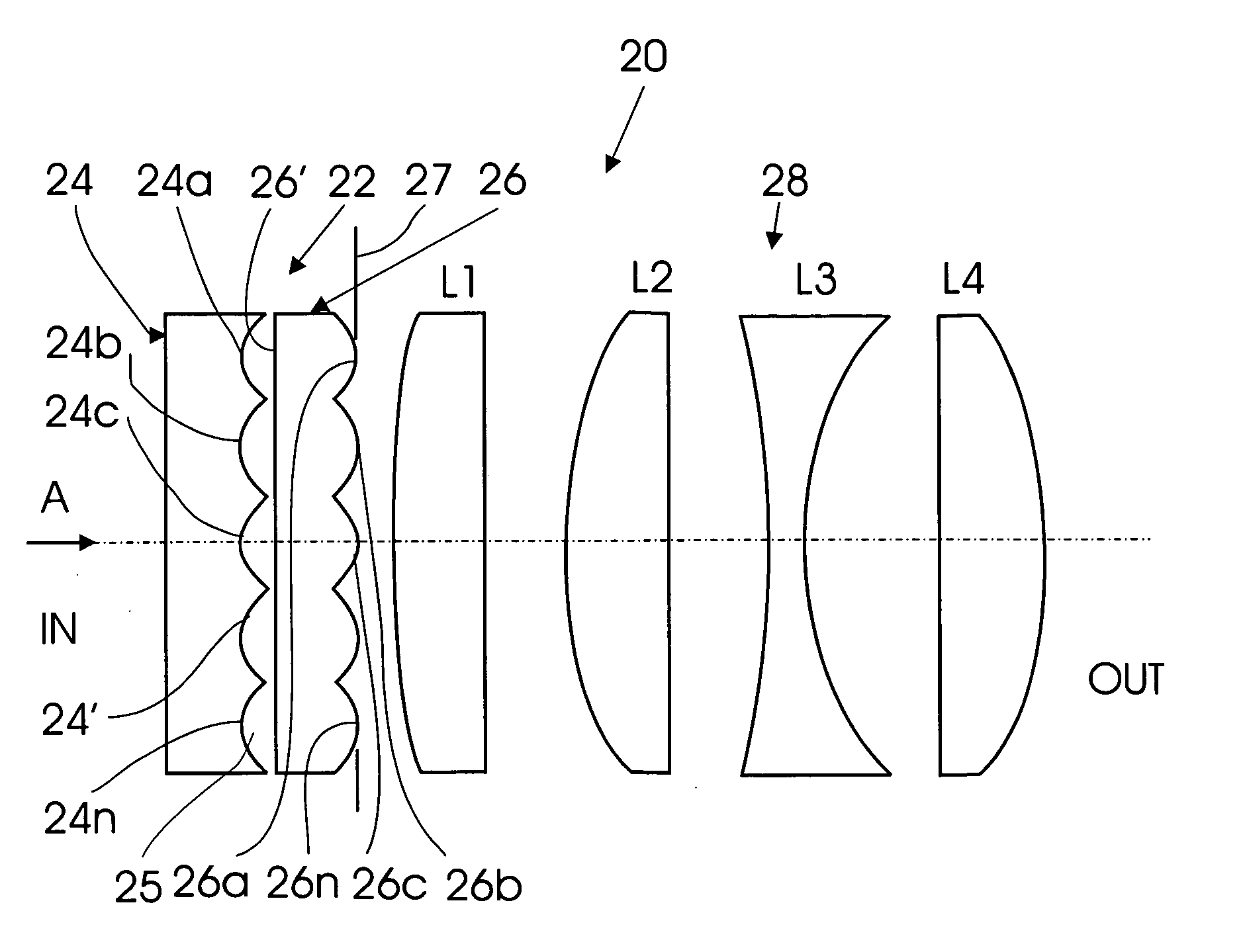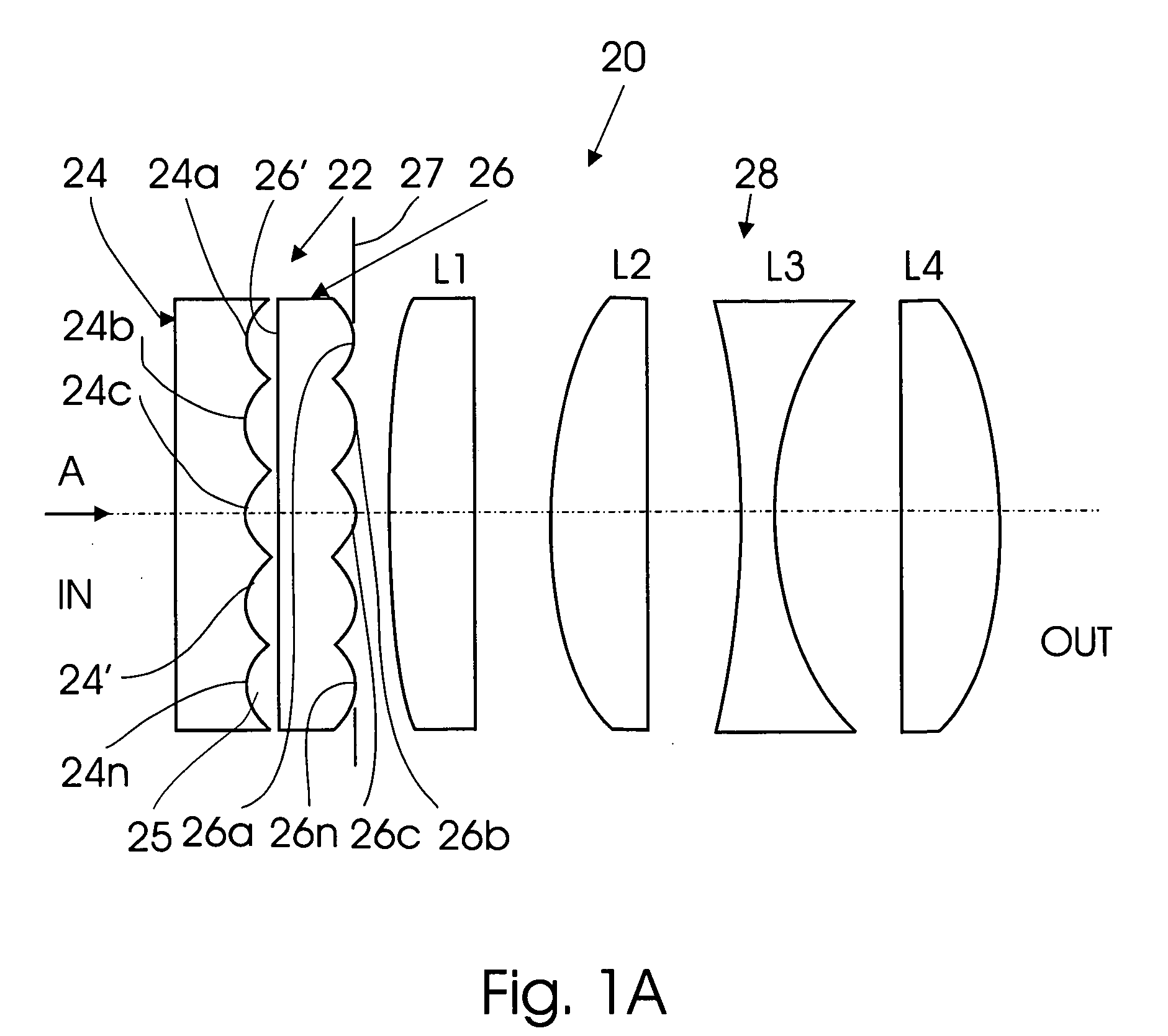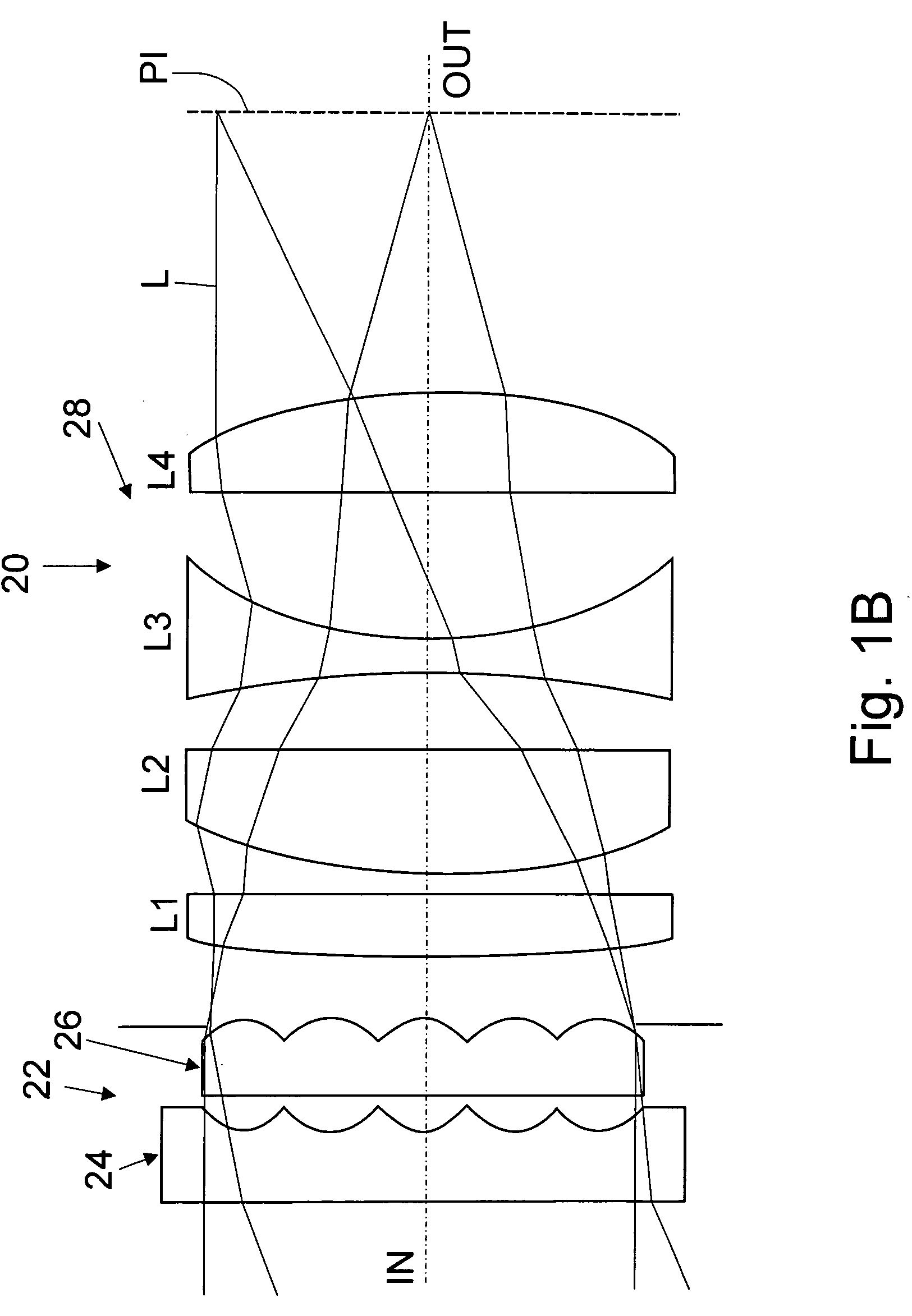Flat wide-angle lens system
a wide-angle lens and flat technology, applied in the field of optics, can solve the problems of increasing the overall radius and hence the dimensions inconvenient use and storage, and error in the abbreviation, so as to reduce the overall dimension of the lens system, suppress aberration, and reduce the weight of the lens system
- Summary
- Abstract
- Description
- Claims
- Application Information
AI Technical Summary
Benefits of technology
Problems solved by technology
Method used
Image
Examples
Embodiment Construction
[0031] A general longitudinal sectional view of a wide-angle lens system made in accordance with one embodiment of the invention is shown in FIG. 1A. The optical ray traces for the system of FIG. 1A are shown in FIG. 1B. It can be seen that the system, which in general is designated by reference numeral 20, consists of two main components, one of which is an assembly 22 of at least two microlens arrays 24 and 26 with the same pitch P between the adjacent microlenses 24a, 24b, 24c, . . . . 24n of the array 24 and between the adjacent microlenses 26a, 26b, 26c, . . . . 26n of the array 26. The respective microlenses of both arrays 24 and 26, i.e., microlenses 24a and 26a, 24b and 26b, etc., are axially aligned. The arrangement of microlenses in the microlens array 24, when viewed in the direction of an optical axis indicated by arrow A, is shown in FIGS. 2A and 2B, where FIG. 2A shows hexagonal arrangement and FIG. 2B shows orthogonal arrangement. It is understood that since the micro...
PUM
 Login to View More
Login to View More Abstract
Description
Claims
Application Information
 Login to View More
Login to View More - R&D
- Intellectual Property
- Life Sciences
- Materials
- Tech Scout
- Unparalleled Data Quality
- Higher Quality Content
- 60% Fewer Hallucinations
Browse by: Latest US Patents, China's latest patents, Technical Efficacy Thesaurus, Application Domain, Technology Topic, Popular Technical Reports.
© 2025 PatSnap. All rights reserved.Legal|Privacy policy|Modern Slavery Act Transparency Statement|Sitemap|About US| Contact US: help@patsnap.com



